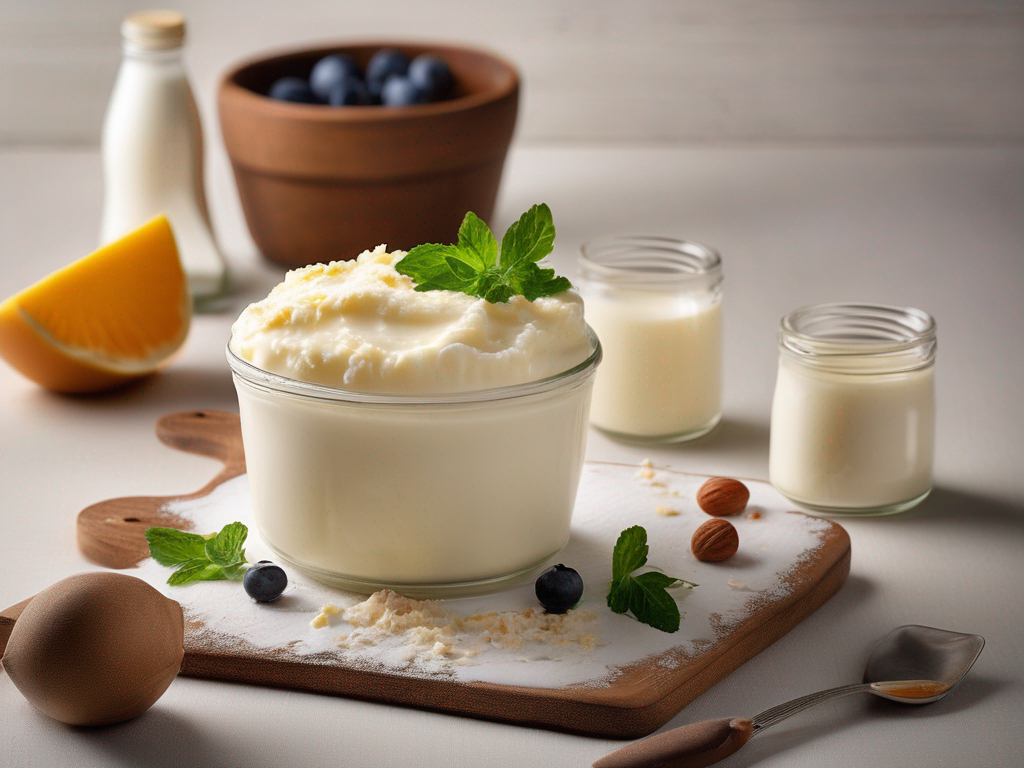
The Best Way to Store Buttermilk in the Pantry
Get Your Free Food Safety Cheat Sheet
30 most common foods with instant answers. Print it and stick it on your fridge—completely free!
The Best Way to Store Buttermilk in the Pantry
When it comes to dairy products like buttermilk, proper storage is crucial to maintain its freshness, flavor, and safety. Buttermilk is a versatile ingredient used in various recipes, from baking to marinades. Storing buttermilk correctly can help extend its shelf life and prevent spoilage. In this article, we will discuss the best practices for storing buttermilk in the pantry to ensure its quality and safety. (Buttermilk)
Understanding Buttermilk and Its Shelf Life
Before delving into storage methods, let's understand what buttermilk is and how long it typically lasts. Buttermilk is a cultured dairy product that is tangy and slightly acidic. It is commonly used in baking to add moisture and a slight tang to recipes. Buttermilk can be store-bought or homemade, with variations in fat content and consistency.
- Store-Bought Buttermilk: Store-bought buttermilk typically comes in a carton or bottle and is pasteurized for safety. It has a longer shelf life compared to homemade buttermilk.
- Homemade Buttermilk: Homemade buttermilk is often made by adding an acid like lemon juice or vinegar to milk. It is fresher but has a shorter shelf life due to the lack of pasteurization.
Buttermilk's shelf life varies depending on factors like storage conditions, packaging, and whether it has been opened. Unopened buttermilk can last longer than opened buttermilk, which is exposed to air and contaminants.
Tips for Storing Buttermilk in the Pantry
Proper storage is essential to preserve the quality and safety of buttermilk. Follow these tips to store buttermilk in the pantry effectively:
1. Choose the Right Container
When storing buttermilk in the pantry, it's essential to use a suitable container that provides protection from light and air. Opt for a container that is:
- Opaque: Light can degrade the quality of buttermilk, so choose an opaque container to shield it from light exposure.
- Airtight: Prevent air from entering the container by using an airtight lid or seal to maintain freshness.
2. Maintain Consistent Temperature
Temperature fluctuations can affect the quality of buttermilk. Store buttermilk in a cool, consistent temperature in the pantry to prevent spoilage. Avoid placing it near heat sources or in direct sunlight.
3. Check the Expiry Date
Before storing buttermilk in the pantry, check the expiry date on the packaging. Ensure that the buttermilk is within its recommended shelf life to guarantee its freshness and safety.
4. Store Away from Strong Odors
Buttermilk can absorb odors from strong-smelling foods in the pantry. Store buttermilk away from pungent ingredients or items with strong odors to prevent flavor contamination.
5. Shake Before Use
Before using stored buttermilk from the pantry, give it a good shake to mix any separated components. This helps distribute the cultures and ensures a consistent texture and flavor in your recipes.
Safety Precautions for Storing Buttermilk
While buttermilk is a nutritious and delicious ingredient, it is essential to follow safety precautions when storing it in the pantry. Consider the following safety tips:
1. Check for Signs of Spoilage
Before using buttermilk stored in the pantry, inspect it for signs of spoilage, such as off smells, curdling, or unusual texture. If the buttermilk appears spoiled, discard it to avoid foodborne illness.
2. Follow Proper Hygiene Practices
When handling buttermilk, practice good hygiene to prevent contamination. Wash your hands before and after handling buttermilk, and use clean utensils and containers to store and pour it.
3. Do Not Leave Buttermilk at Room Temperature for Extended Periods
Buttermilk should not be left at room temperature for extended periods, especially in warm environments. Return it to the pantry promptly after use to maintain its quality and safety.
4. Use a Thermometer for Temperature Monitoring
For optimal storage conditions, consider using a thermometer to monitor the temperature of the pantry where buttermilk is stored. Keep it within the recommended temperature range to prevent spoilage.
Conclusion
Proper storage is key to maintaining the freshness and quality of buttermilk in the pantry. By following the tips outlined in this article and observing safety precautions, you can enjoy the versatility of buttermilk in your culinary creations. Remember to check the expiry date, choose the right container, and store buttermilk away from strong odors for the best results. With these practices in place, you can confidently store buttermilk in the pantry while ensuring its safety and flavor. (Buttermilk)
Authoritative Food Safety References
These agencies and university labs inform every tip and health precaution we publish.
USDA FoodKeeper – Cold Storage Guidelines
Official refrigerator, freezer, and pantry timelines maintained by the U.S. Department of Agriculture.
Visit USDA FoodKeeperFDA Produce Safety Rule & Grower Guidance
Field-to-fridge handling practices that prevent contamination of fruits, vegetables, and leafy greens.
Visit FDA Produce SafetyCDC Foodborne Illness Prevention Hub
Surveillance-backed guidance on pathogens, symptoms, and steps to reduce foodborne illness risk.
Visit CDC Food SafetyUC Davis Postharvest Technology Center
University research detailing optimal storage atmospheres for produce after harvest.
Visit UC Davis PostharvestPenn State Extension – Home Food Preservation & Safety
Peer-reviewed extension bulletins on safe canning, chilling, and reheating practices.
Visit Penn State ExtensionGet Your Free Food Safety Cheat Sheet
30 most common foods with instant answers. Print it and stick it on your fridge—completely free! Want more? Upgrade to the complete guide with 70+ foods.
Scan your food directly and get instant safety info using our AI-powered camera feature.